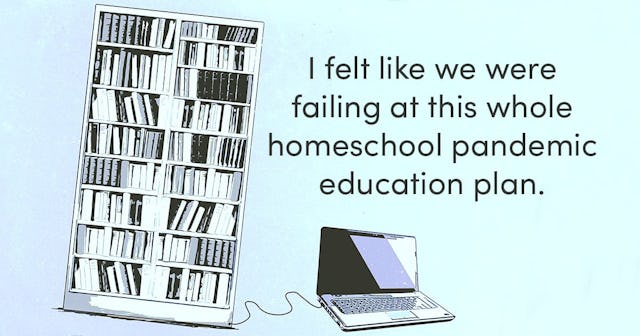Distance-Learning Feels Like A Recipe For Failure––Attendance Rates Back This Up

Getting my 13-year-old son to participate in online homeschool is about as pleasant as slamming my head in a car door.
He isn’t a bad kid, honestly. He’s just 13 and is at that age where he only wants to do the things he’s interested in, and thus sitting down and working through a math packet on his own, or answering a bunch of questions about The Call Of The Wild when he is already missing his friends. just isn’t working.
To put this all in perspective, my wife and I are both educators. I manage the tutors and study tables for a D1 athletics program, and she actually teaches at our son’s school, so she has the inside track on what’s going on. Even so, when Mel asked our son if he’d checked his school email recently, he said, “I have an email?” There were, in fact, close to 100 emails in there from his teachers about assignments and online Zoom meetings, and he was already weeks behind. Mel and I felt like we were failing at this whole homeschool pandemic education plan.
And we’re the lucky ones, because our only problem is a reluctant learner — not an issue of access and privilege.
When I started seeing headlines that teachers across the country are reporting that fewer than half of their students are participating in online learning, I wasn’t shocked. I understood the challenges. According to a recent New York Times article, the absence rate appears particularly high in schools with many low-income students, whose access to home computers and Internet connections can be spotty.
This is consistent with a survey of students conducted by Common Sense Media, in partnership with SurveyMonkey. The poll of 849 teenagers found that as schools across the country transition to some form of online learning, 41% of teenagers overall, including 47% of public school students, say they haven’t attended a single online or virtual class.
Jena Backus/Pexels
Reading these numbers, I couldn’t help but wonder how this would have played out when I was 13. My father was gone by then, and my mom worked full time at our local power company, and then part time in retail. Chances are, she would have been an essential worker pulling long shifts outside the home from 7AM-9PM. We could hardly afford groceries, so there’s no way we could have afforded the technology needed to attend online school. And even if we were given the technology, as many schools are issuing laptops and tablets so children can log on, it is doubtful that we could have afforded WiFi at all, let alone a strong enough signal to attend a Zoom meeting. But even then, if we could have gotten over the technology hurdles, my mother was gone — so it would have been up to myself and my siblings to actively participate, which we wouldn’t have been mature enough to do without oversight.
Naturally, this is all consistent with most low-income areas in the US. According to NPR, while 47% of public school students say they have not attended a single online class, that number is just 18% among private school students. Serge Avery, a social studies teacher at Brooklyn Technical High School, one of the city’s most competitive institutions, reported to the Times that 98% of his students have been participating in daily online activities.
So what does this all add up to?
Basically this: The upper class have the means, the technology, and the time to educate their children properly during this pandemic, while the middle class and lower class are struggling to support their families while also educating their children. All of it is boiling down to more than half of children in public education not attending online class right now. This stems from a litany of technology access issues, to oversight issues, to having parents who are just not qualified to help with every subject their children might need help with — or who are essential workers, and simply do not have the time to properly make sure their children are attending and participating.
Naturally, this will do little more than broaden the divide between classes and education, and some students will be expected to repeat grades, or will be thrust into the next, more advanced class, with little to no foundation on the subject matter, causing them to sit in on a lecture that might as well be in Latin. All of it is in the name of public health, and I think most get that. It also seems apparent that the broad ramifications of the online educational disparity of spring 2020 will not be fully calculated for some time, and there are frankly not a lot of ways to remedy it.
All of it boils down to public education being yet another casualty of the fight against COVID 19, and those falling on the sword are the lower and middle class children struggling to educate themselves during a pandemic.
This article was originally published on